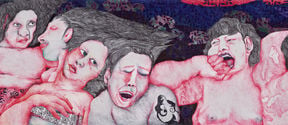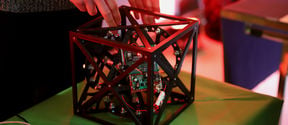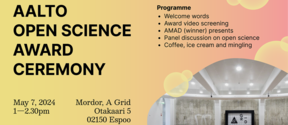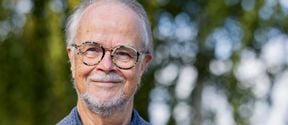Researchers found mathematical structure that was thought not to exist
In the 1970s, a group of mathematicians started developing a theory according to which codes could be presented at a level one step higher than the sequences formed by zeros and ones: mathematical subspaces named q-analogs.
For a long time, no applications were found – or were not even searched for – for the theory until ten years ago, when it was understood that they would be useful in the efficient data transmission required by modern data networks. The challenge was that, despite numerous attempts, the best possible codes described in the theory had not been found and it was therefore believed they did not even exist.
However, an international research group disagreed.
‘We thought it could very well be possible,’ says Professor Patric Östergård from Aalto University and smiles.
‘The search was challenging because of the enormous size of the structures. Searching for them is a gigantic operation even if there is very high-level computational capacity available. Therefore, in addition to algebraic techniques and computers, we also had to use our experience and guess where to start looking, and that way limit the scope of the search.’
The perseverance was rewarded when the group consisting of five researchers found the largest possible structure described by the theory. The results were recently presented in the scientific publication Forum of Mathematics, Pi, which publishes only a dozen carefully selected articles per year.
Aalto University (Finland), Technion (Israel), University of Bayreuth (Germany), Darmstadt University of Applied Sciences (Germany), University of California San Diego (USA) and Nanyang Technological University (Singapore) participated in the study.
Green science
Although mathematical breakthroughs rarely become financial success stories immediately, many modern things we take for granted would not exist without them. For example, Boolean algebra, which has played a key role in the creation of computers, has been developed since the 19th century.
‘As a matter of fact, information theory was green before anyone had even mentioned green alternatives,’ says Östergård and laughs.
‘Its basic idea is, actually, to try to take advantage of the power of the transmitter as effectively as possible, which in practice means attempting to transmit data using as little energy as possible. Our discovery will not become a product straight away, but it may gradually become part of the internet.’
Michael Braun, Tuvi Etzion, Patric Östergård, Alexander Vardy, Alfred Wassermann: “Existence of q-analogs of Steiner Systems”. Forum of Mathematics, Pi. Link to the publication
Further information:
Professor Patric Östergård
tel. +358 50 344 3610
[email protected]
- Published:
- Updated:
Read more news

Aalto ARTS alum Vidha Samya’s artwork featured at the Venice Biennale 2024
The Pavilion of Finland presents ‘The pleasures we choose’ at the 60th International Art Exhibition – La Biennale di Venezia until 24 November 2024.
IoT Forge donates EUR 1 million to the School of Engineering
The donation will be used for research and education on the Industrial Internet and digital twins.
Join us for the first Aalto Open Science Award Ceremony
All Aaltonians are welcome – no registration required!